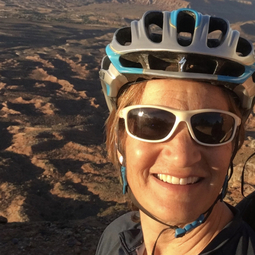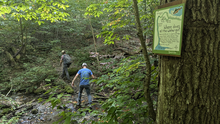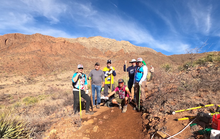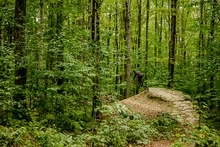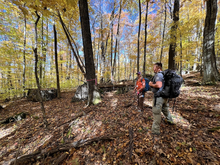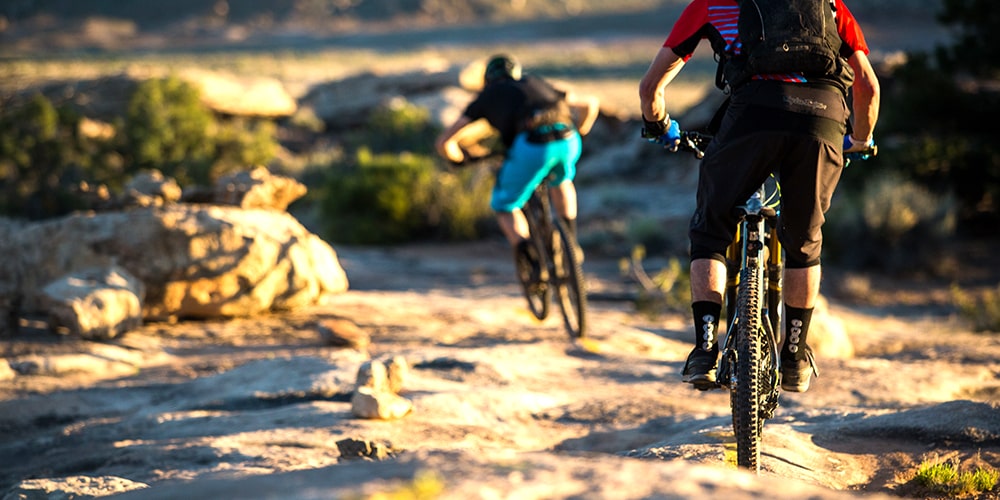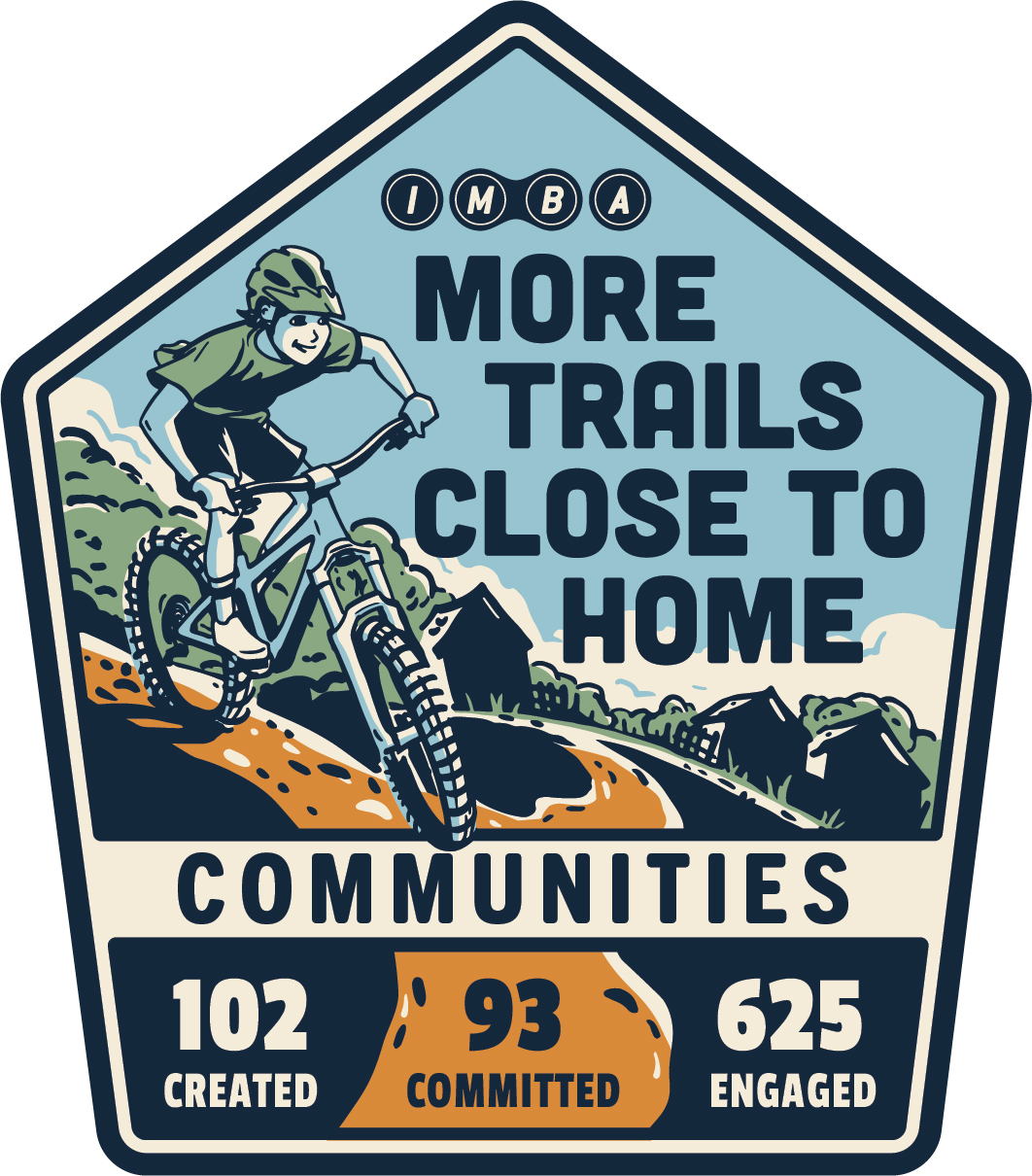Riding the Wave in Williamstown
This is a continuation of "How Mountain Bike Trails Came to Cedar City Part I" published in mid-2021.

Planning/Design

After evaluating existing trails and trailheads and surveying the land around Cedar City, Shane Wilson, IMBA Trail Solutions Project Manager developed a trails concept plan encompassing 100 miles of singletrack, which would connect the community directly with the breathtaking terrain in their backyards. The community then had a chance to provide feedback on the concept plan and revisions were made, Trail Solutions incorporated community input throughout the initial concept plan recommendations. “Shane listened to our input,” says AJ Sahagun, former DMBTA board member who started the Cedar City chapter of DMBTA, (now Iron Trailcraft). “Then he showed us that we could plan where the trailheads were and connect all the trailheads and trails into a system. And he explained the benefit of having the trails close to town for easy access.
“At first we didn’t see the need for an overall concept plan, but it was key. Having the design in hand captured the attention of the city. It made it easier to explain our project to everyone involved and then everyone was more than eager to help. We needed it for grants, to plan things, and to get everyone on the same page. It helps information flow freely.”
“IMBA helped us understand the whole picture of creating trails--the process of how to go from planning to funding to design to building,” says Mac Urie, Mac Urie, a local rider who spearheaded efforts for more trails close to Cedar City in the early stages. “Our trail system is very well planned, and the trails are built for longevity. And they allow for multiple skill levels to ride the same trails. I don’t think we’d have such good trails if it weren’t for IMBA. The end result is a lot better quality than if you just go out and try to do it yourself.”

Construction

Trail building started in earnest in September 2015. The Trail Solutions build team used a trail dozer and mini-excavator for major portions of the first two trails, Lichen It and Lava Flow. “I had never been involved with machine building on trails,” says Dave Jacobson, Outdoor Recreation Planner for the Bureau of Land Management (BLM) Cedar City office. “I was surprised at what a dozer and a mini-ex can do and how fast they can build trails. The machines improve the trail quality, making banked turns or rollers, and they can take the trail places where a hand-built trail wouldn’t go.”
Volunteers assisted the team in corridor clearing, hand-building sections, and hand finishing. The BLM coordinated the various groups of volunteers, and the Trail Alliance of Southern Utah brought in their members and friends for Tuesday evening and Saturday morning builds. By December 2015, the first phase of 7.5 miles of trails was on the ground, and the corridor design of future builds was underway.
Lichen It and Lava Flow make a loop configured with a 2.8-mile climb and a 2-mile descent with plenty of berms and optional rock lines. “After we built Lava Flow and Lichen It, everyone loved it and had fun,” says Sahagun. “Lichen It is the uphill trail that doesn't feel like an uphill.” The loop quickly became a favorite training ride for the Iron Giants NICA mountain bike team. By September 2016, this loop hit 2,000 riders during the month.
Trail Solutions planned the trail development in phases, which offers many benefits, including offsetting financial burden by building over time, ensuring sufficient time for planning and constructing high-quality trails, and increasing the appeal of the trail system by providing new additions that encourage return visits. The next phase of the build, in the fall 2016, saw the construction of Green Hollow, which, when combined with Lava Flow, results in a 4-mile mountain bike-optimized descent that can be accessed with a vehicle shuttle.
In 2017, the completion of the Highlands trail connected the pre-existing C-Trail with the Iron Hills Trail System, adding another 2 miles to the shuttle descent of Green Hollow and Lava Flow, and creating a loop of over 10 miles. Design work was also completed for Iron Giant, Boulderdash, and Turnpike trails.
Work during the spring and fall of 2018 resulted in the completion of three more trails. Iron Giant is for beginning riders, with kid-friendly berms and floaty rollers that provide a perfect way to introduce new riders to progressive mountain bike trails. Turnpike is a 4-mile trail connecting the Southview and Shurtz Canyon/Pyramid Ridge trailheads. Advanced riders love the extremely challenging rock fest known as Boulderdash.
November 2019-2020 saw the construction of Elevate, Black Ops and Boneyard. In combination with a segment of Turnpike, this resulted in a 7-mile loop with over 1,000 feet of elevation gain. Elevate creates a narrow climb with technical rock sections while Black Ops features big, rock-lipped jumps and rough, natural rock challenge areas. Boneyard is an expert gravity descent with fun berms intermixed with high-speed tech. Currently, 33 miles of the 100 conceptual miles are completed, with more on the way.

Assessment
Riders from all over the state--and beyond--give rave reviews to the new Cedar City trails. A review on Trailforks from @bradgretz, Canada, Oct 27, 2019 reads: “Been riding in Bryce and Hurricane for a week and gave Cedar City a whirl. Glad we did! Great fun, flowy trails up and down! Just pure mountain biking fun! Hats off to the biking community here! This area has so much potential to become a big destination! Left some cash in the donation box.”
Jeff Jacombe, board member of Iron Trailcraft, has noticed huge growth in bike culture in Cedar City. “The NICA teams have gone crazy the last few years. Older people are riding. I’m a real estate agent and people want to buy homes by the trails,” he says. “It’s exciting when you get big projects done. We have enough mileage now to be a destination. I see bikes on the backs of cars at hotels. I’ve talked to Canadians and Germans, people from California and Colorado. We had Santa Cruz bikes come and volunteer, and Fezzarri came and did a trail build day and then rode our trails. They loved it, and we’re going to have them back.”
“We had a guy move here from Colorado and open up a bike shop. He was traveling through and loved it so much he decided to move,” says Urie. “Mountain biking is blowing up here. We know that because we have trail counters set up. People of all shapes and sizes are out on the trails.”
While informal reviews attest to the popularity of the trails, IMBA also provides formal assessments of trails and surrounding community based on its IMBA Ride Center™ designations which "recognizes the pinnacle of mountain biking communities." To be a high-quality destination, a community must provide high-quality trails for every type of mountain biker and include amenities such as bike rentals, guides, restaurants, and lodging. Ride Centers bring major economic benefits to their communities by supporting tourism and enhancing economic development. Going through IMBA’s assessment helps community partners evaluate what they already have and learn what they need to become a great mountain biking destination.


Stewardship
Once trails are built, they still need a little love. Successful trail development includes stewardship and maintenance plans. As part of the agreement with the BLM, the Trail Alliance of Southern Utah is responsible for maintaining the Cedar City trails. “There is no way the two of us at the BLM could maintain the entire trail system,” says Jacobson. Over time, some members of TASU formed a more local chapter, Iron Trailcraft, to solely focus on the growing systems in Cedar City. Alongside Iron Trailcraft's work in Cedar City, local bike shop Red Rock Bicycles created the Red Rock Trail Crew program and hired Bill Bergeron to lead the crew.
Maintenance is minimized when trails are built according to sustainable trail principles. Jacombe says that IMBA's trail building differs from other trail building he has seen because of its focus on sustainability. “Sustainable construction makes trails a little more difficult to build,” he says, “but Lichen It and Lava Flow are 5 years old, and we haven’t had to do any major maintenance, and we’ve exceeded over 10,000 users each year. We have a counter on it.”
Jacobson continues his work on Cedar City trails and is now helping Beaver, Utah, a community to the north, develop their trails. “Now that we have purpose-built trails in Cedar City, I’m trying to explain to the people in Beaver why they want purpose-built trails. I mean, the people think, ‘Why can’t we just get a rake out and move a couple of rocks and then we’ll have a trail?’ And I understand. That used to be my mindset. But now I say, ‘We can easily put in a Pinto trail, but you probably want a Porsche or a Maserati, something that will last, something that’s quality. We want stuff that flows, that has banked turns, that’s fun to ride, that will be sustainable.’ Anyone can go out there and build a rake and ride trail. I don’t know where we would have even begun to capture the skill set we needed without IMBA. We couldn’t have created the trails we have without them.”
“I’ve ridden trails all over the country--places that have spent a lot more money on their trails than we have--but their trails are not as good as what we have,” says Sahagun. “And I would say that is because we partnered with IMBA.”

